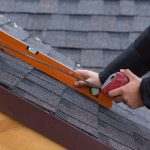7 Simple Steps for Making Pretty DIY Headbands
Need an easy way to add a dash of fashion and color to your everyday wardrobe?
Maybe you want to cut down on the time you spend styling your hair every day. You can do that without having a bad hair day.
With a pretty headband, you can look chic and put-together instantly. They can make any hairstyle look fabulous in seconds.
Headbands come in all sorts of colors, styles, and prices. It’s an easy and inexpensive way to upgrade your look. You can have a different style for every outfit.
Want to pair a headband with a particular outfit, but can’t find the style you’re looking for? Make it yourself!
Read on for 7 simple steps for making DIY headbands.
1. Decide on Your Design
There are so many different types of DIY headbands you can make — beaded headbands, plastic, braided, floral, you name it!
If you need a little inspiration, try flipping through some magazines. You can also visit the websites of your favorite clothing and accessories brand.
You might find a headband that you want to copy. You’ll probably save some money by making it yourself, plus it’s a fun afternoon activity.
Still deciding on a design? Why not try a fabric and elastic headband.
DIY Headbands with Elastic and Fabric
This headband stays on using an elastic instead of a plastic band. This is for a more casual, every day look.
2. Collect Your Materials
You’ll need:
- Fabric
- Elastic that’s 6 inches long and 3/4 of an inch wide
- Safety pin
- Pins
- Scissors
- Fabric glue or needle and thread
- An iron and ironing board
Since you’re only making a head band you don’t need much fabric. At fabric stores ,they often have fabric scraps you can purchase at a discount.
Another idea is to take the fabric from something you don’t wear anymore.
3. Cut Your Fabric and Elastic
Now you’ll be cutting two fabric pieces, one large and one small. The large one should be 18 inches by 4 3/4 inches. The smaller one should be cut to the dimensions of 9 inches by 1 3/4 inches.
Measure and cut your elastic down to 6 inches. From here, fold both pieces of fabric, length wise.
If your fabric is patterned, make sure you fold it inside out. Meaning the black side should be showing and not the pattern.
4. Press Your Fabric
Take your folded fabric over to the ironing board. Press the entire piece, and iron over the crease.
This step is important for two reasons. For one, you don’t want the fabric to be wrinkled because then you’ll end up with a messy looking headband. Secondly, if the crease is pressed, it makes it much easier to sew or glue.
5. Sew or Glue
Do you feel comfortable sewing? Great! Do you have a sewing machine?
Even better! That means making DIY headbands just got even easier.
If neither is an option, don’t sweat it. You can glue together your pieces with fabric glue instead of sewing.
It’s specifically made to replace sewing. That means it will be durable and it won’t be too thick. If you use thick, hot glue, you might be able to see bumps under the fabric.
Assembling
To put the headband together, sew or glue down the long side of the fabric. You should be left with a tube. Each smaller end is left open.
Now, flip both tubes right side out. You’ll be left with a clean, hidden seam. Before adding the elastic, go back to the ironing board and press the pieces flat.
After that, on each end of both pieces of fabric, tuck in the raw edges. Meaning, the cut edges will now be folded inside the tube. The folded down fabric should be about 1/2 an inch long.
Press these edges so they lie flat. Make sure that the edges are even on both sides.
6. Add the Elastic
Attach the safety pin to one end of the elastic. This will make it easier for you to fish it through the fabric.
Guide the pin and elastic through the shorter piece. Stick pins through the fabric and elastic on one end. This will keep the elastic from moving.
Now, scrunch down the fabric on the elastic. The fabric should be bunched up around it. Secure the fabric by pinning the other side to the elastic.
Glue or stitch across each end of the fabric. You can remove the pins now that it’s secure.
7. Secure the Elastic
Here, you will take the small piece you were just working on and attach it to the large piece.
Tuck one end of the small piece inside the opening of the large piece. Pin it down to keep it in place.
The larger piece will be wider than the small piece. To make them even, fold a small pleat into both sides.
Do this by folding in the extra fabric inside of itself. They way you would when you’re wrapping each end of a gift. Now do the same thing on the other side.
Try it On
Before sewing it, be sure to test out the sizing. Gently put it on your head, watching out for the pins.
If it’s not tight enough, unpin one of the sides. Cut off a bit of fabric from one end of the big piece.
Don’t cut off too much. Instead cut a little bit at a time. You can always take off more, but you can’t reattach it.
Finally, have it at the perfect size? Now sew or glue the small pieces to the large pieces.
If you’re sewing, you’ll be sewing over the elastic to keep it in place. If you’re gluing, you will glue the top and bottom of the elastic to the inside of the fabric.
Now, take out the pins and show off your new look!
Making DIY Headbands is Fun and Simple
Now that you know how easy it is to make your own headband, you can do it all the time! You’ll never be without the perfect headband to go with any outfit.
Want to discover more DIY projects? Check out these blogs for more ideas!





